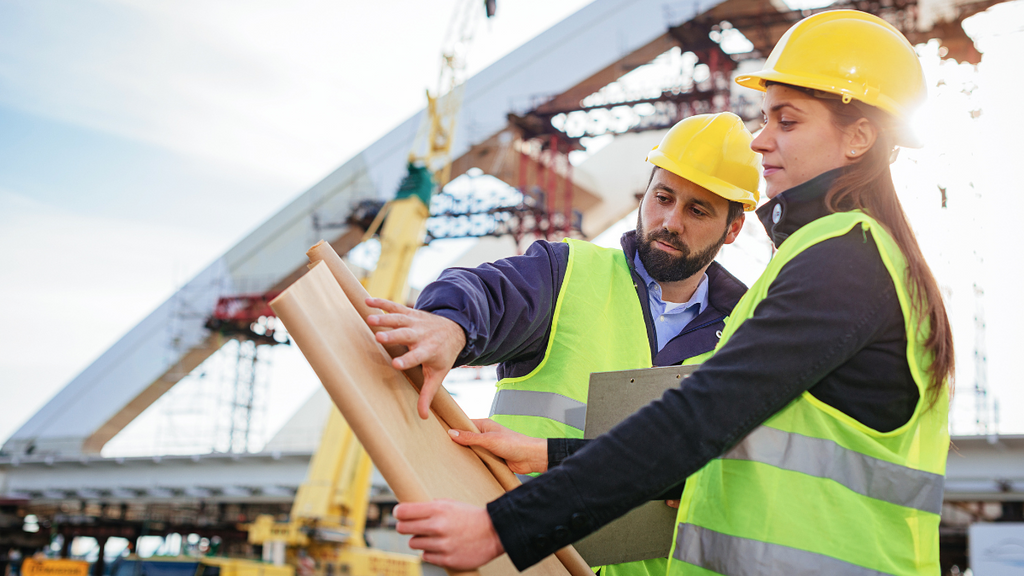The Greatest Guide To Geotheta
The Greatest Guide To Geotheta
Blog Article
The Definitive Guide for Geotheta
Table of ContentsThe Main Principles Of Geotheta The Facts About Geotheta UncoveredOur Geotheta DiariesThe Ultimate Guide To GeothetaWhat Does Geotheta Mean?

They perform site examinations, collect samples, carry out research laboratory examinations, and assess data to review the suitability of the ground for building and construction tasks - Engineer of Record. Based on their searchings for, geotechnical designers provide recommendations for structure layout, incline security, keeping frameworks, and mitigation of geotechnical risks. They collaborate with various other professionals, such as architects, architectural designers, and construction groups, to make sure that geotechnical considerations are integrated right into the total project layout and application
By analyzing the actions and properties of soil and rock, they can identify potential geotechnical risks such as landslides, soil negotiation, or incline instability. Their knowledge assists prevent failures or accidents that can threaten lives and home. Below are some comprehensive tasks and duties of a geotechnical engineer: Website Examination: Geotechnical designers conduct site examinations to gather information on subsurface conditions.
They analyze the data to understand the buildings and habits of the soil and rock, including their stamina, leaks in the structure, compaction characteristics, and groundwater problems. Geotechnical Analysis and Layout: Geotechnical designers evaluate the data collected throughout website examinations to examine the security and viability of the site for building and construction tasks. They execute geotechnical computations and modeling to examine aspects such as birthing capacity, settlement, slope security, side planet stress, and groundwater circulation.
Examine This Report on Geotheta
Foundation Design: Geotechnical designers play a vital function in creating foundations that can securely sustain the desired framework. They evaluate the dirt conditions and load needs to figure out the suitable structure kind, such as shallow foundations (e.g., grounds), deep structures (e.g (https://myanimelist.net/profile/geotheta)., heaps), or specialized techniques like soil enhancement. They think about variables such as settlement limits, bearing capacity, and soil-structure communication to develop optimum foundation designs
They assess building strategies, monitor site activities, and conduct field evaluations to confirm that the style suggestions are complied with. If unpredicted geotechnical issues arise, they analyze the circumstance and provide referrals for removal or adjustments to the design. Threat Analysis and Mitigation: Geotechnical designers analyze geotechnical dangers and dangers connected with the task site, such as landslides, liquefaction, or dirt disintegration.

Partnership and Communication: Geotechnical designers work closely with various other specialists associated with a task, such as architects, structural engineers, and building and construction groups. Reliable communication and partnership are important to integrate geotechnical factors to consider into the overall job design and building process. Geotechnical designers offer technological experience, response questions, and make sure that geotechnical demands are met.
The smart Trick of Geotheta That Nobody is Talking About
Right here are some types of geotechnical designers: Foundation Designer: Structure engineers focus on creating and evaluating foundations for frameworks. They analyze the dirt problems, tons demands, and site features to establish one of the most suitable structure kind and layout, such as superficial structures, deep structures, or specialized strategies like heap structures.
They assess the elements influencing incline security, such as dirt buildings, groundwater problems, and slope geometry, and create approaches to stop slope failures and reduce dangers. Earthquake Engineer: Earthquake designers concentrate on analyzing and developing structures to withstand seismic pressures. They assess the seismic danger of a website, examine soil liquefaction potential, and develop seismic design criteria to make certain the safety and resilience of structures throughout earthquakes.
They perform area testing, accumulate examples, and analyze the collected information to characterize the dirt residential properties, geologic developments, and groundwater problems at a site. Geotechnical Instrumentation Engineer: Geotechnical instrumentation designers concentrate on tracking and determining the actions of dirt, rock, and frameworks. They install and maintain instrumentation systems that keep track of elements such as soil negotiation, groundwater levels, incline activities, and structural displacements to evaluate performance and give very early warnings of prospective issues.
Our Geotheta PDFs
They carry out tests such as triaxial tests, debt consolidation tests, straight shear examinations, and leaks in the structure tests to collect information for geotechnical analysis and layout. Geosynthetics Engineer: Geosynthetics designers specialize in the style and application of geosynthetic products, such as geotextiles, geogrids, and geomembranes. They use these products to improve soil stability, reinforce inclines, give drain services, and control disintegration.
They have a tendency to be investigatory individuals, which suggests they're intellectual, introspective, and investigative. They are curious, methodical, rational, analytical, and sensible. A few of them are additionally social, meaning they're kind, charitable, participating, person, caring, helpful, compassionate, sensible, and pleasant. Does this sound like you? Take our complimentary career test to discover if geotechnical designer is one of your top job matches.
In the office atmosphere, geotechnical designers utilize specialized software application devices to execute calculations, create styles, and assess data. They prepare records, review project click to investigate specifications, communicate with clients and employee, and coordinate task tasks. The office setting provides a helpful setting for research study, analysis, and collaboration with various other specialists associated with the project.
Not known Facts About Geotheta
They regularly go to project websites to perform site examinations, evaluate geotechnical problems, and gather information for analysis. These visits include taking a trip to different areas, often in remote or challenging surfaces. Geotechnical engineers might execute soil sampling, conduct tests, and monitor building tasks to make sure that the geotechnical aspects of the task are being implemented correctly.
Geotechnical designers additionally function in specialized geotechnical research laboratories. Geotechnical laboratory engineers function extensively in these environments, taking care of testing devices, operating tools, and recording data.
Report this page